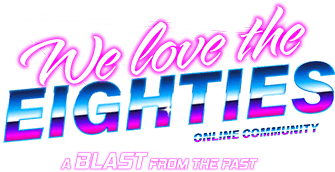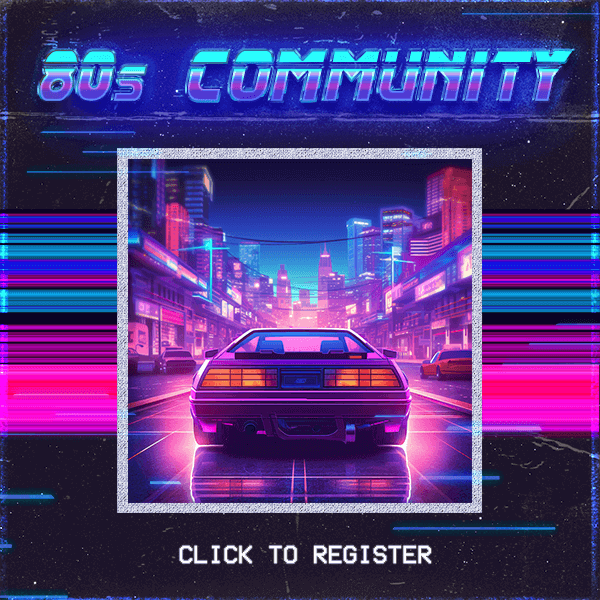The 1980s stand as one of the most iconic decades in modern history, with a distinct cultural footprint that still resonates today. High school life during this era was vibrant, characterized by unique fashion, music, and social dynamics that reflected a rapidly evolving world. From the hairstyles and music to the social scenes and emerging technology, high school students in the 1980s experienced a period of cultural richness and transformation. Let’s dive into what made high school during the 1980s a unique experience and how it shaped the teenagers of the time.
The High School Atmosphere of the 1980s
High schools in the 1980s were filled with a sense of individuality, creativity, and bold self-expression. The energy was palpable; students were emerging from the economic struggles and social upheaval of the 1970s and embracing a renewed sense of optimism. The desire for freedom and self-expression played out in every corner of the high school landscape, from fashion to the popular music of the time. Schools were generally more structured, but students still enjoyed a sense of independence and freedom not seen in previous generations.
1980s High School Fashion and Style
Fashion in high school during the 1980s was iconic, making it one of the most visually memorable aspects of the era. Teens embraced trends that were bold, colorful, and highly expressive. For girls, the style often involved bright colors, oversized tops, leggings, and scrunchies, combined with layers of chunky jewelry. Neon colors, high-waisted jeans, and shoulder pads were also signature looks. Boys leaned towards preppy styles, often seen in polo shirts, sweater vests, and acid-washed jeans, or they embraced the edgier punk and rock styles with leather jackets, band T-shirts, and studded accessories.
Hairstyles were equally influential in defining the 1980s look. Big hair was the ultimate fashion statement; girls often sported voluminous curls or waves achieved through teasing and hairspray, while boys opted for mullets or slicked-back hair. This decade also marked the rise of the perm for both genders, giving hair even more volume and texture. The hairstyles and clothing trends were a means for students to assert their personalities and feel a sense of belonging within the different social groups that defined high school life.
Music: The Heartbeat of High School Culture
The music scene in the 1980s was incredibly diverse and influential, with genres like pop, rock, new wave, hip-hop, and heavy metal shaping the social experience of high school students. Pop icons like Michael Jackson and Madonna dominated the airwaves, and their music videos were more than just entertainment; they were a window into aspirational lifestyles and cutting-edge fashion. The introduction of MTV in 1981 revolutionized music culture and had a profound effect on teenagers, giving them a visual connection to their favorite music stars and helping to spread trends nationwide.
Aside from mainstream pop, the punk and heavy metal scenes attracted teenagers who felt alienated from the mainstream, and these genres gave rise to subcultures within the high school environment. Hip-hop also began to emerge in the 1980s, resonating strongly with urban youth and giving rise to breakdancing and other expressions of street culture. Music wasn’t just background noise; it was an essential part of the 1980s high school identity, influencing fashion, social circles, and even attitudes.
Social Dynamics and Cliques
The social dynamics of high school during the 1980s were complex, with a wide array of cliques and groups that defined the social hierarchy. These cliques were partly influenced by media portrayals in movies and TV shows, creating an environment where identity and belonging were shaped by the crowd you associated with. Common groups included jocks, nerds, preps, goths, punks, and the ever-mysterious “outsiders.” Each clique came with its own rules of fashion, music preferences, and attitudes.
Jocks, who dominated high school sports teams, were usually at the top of the social ladder, embodying traditional ideas of masculinity and popularity. Nerds, on the other hand, were often marginalized but also found solidarity within their group, especially as technology like computers and video games began to emerge. The preps were the well-dressed students, often from affluent backgrounds, who adhered to a polished, stylish image. Goths and punks embraced a rebellious aesthetic, using fashion as a form of self expression and rejecting mainstream norms. These cliques were more than just friend groups; they were subcultures that influenced and even dictated students’ lifestyles, ambitions, and self-worth.
The Role of Technology in High School
Technology in the 1980s was still in its nascent stages but had a growing presence in high schools. Although there was no internet or smartphones, computers started making their way into classrooms, sparking curiosity and setting the foundation for the technological revolution that would come in the following decades. The Apple II, introduced in the late 1970s, became a common sight in some schools, particularly in computer science classes. These machines gave students a glimpse into the future and marked the beginning of the digital age.
Beyond computers, other forms of technology impacted high school life. Portable music players, particularly the Sony Walkman, allowed teens to carry their music with them, creating a more personal and mobile relationship with music. This newfound ability to listen to music on the go reinforced music’s role in personal identity and allowed students to carve out private moments, even in crowded school hallways. Video games also began to rise in popularity, with arcades becoming social hubs for teenagers outside of school hours.
Movies and Media Influence
Movies and television shows were integral to high school culture in the 1980s, especially with the emergence of the “teen movie” genre. Films like The Breakfast Club, Ferris Bueller’s Day Off, and Fast Times at Ridgemont High offered portrayals of high school life that resonated with teens and captured the complexities of the high school experience. These movies explored themes like peer pressure, the search for identity, and the tension between different social groups, creating characters and situations that were relatable and aspirational for many students.
These films also contributed to the way teenagers perceived themselves and each other, shaping the high school experience in ways that hadn’t been seen before. For instance, The Breakfast Club famously highlighted the struggles of different high school archetypes the athlete, the brain, the criminal, the princess, and the basket case making it clear that beneath the stereotypes, everyone had their own struggles and insecurities. Television shows, too, such as Square Pegs and Saved by the Bell, reinforced and occasionally challenged these stereotypes, helping to shape perceptions and norms around teenage life.
Academics and Extracurricular Activities
Academically, high school in the 1980s was rigorous, but students faced a less test-driven environment than modern students do. Standardized tests like the SAT were important, but there was less emphasis on the high-stakes, college-focused pressure that dominates today’s academic landscape. The Reagan administration’s 1983 report, A Nation at Risk, did highlight concerns about American education standards, which eventually led to increased attention on academic performance. However, the competitive, test-focused atmosphere that came to characterize later decades had not yet fully taken hold.
Extracurricular activities, from sports to debate clubs to arts programs, were popular and played a central role in high school life. These activities provided a sense of identity and belonging and allowed students to pursue personal interests outside the classroom. The arts, especially theater and music programs, were particularly vibrant during the 1980s, with many high schools hosting musicals, talent shows, and concerts that allowed students to showcase their creative talents.
Relationships and Teen Issues
Teen relationships in the 1980s, much like today, were a defining aspect of high school life. Students began dating more casually, as social norms around relationships began to shift. Movies and music popularized the idea of teenage romance, and high school dances like prom were major social events, eagerly anticipated for months.
High school students in the 1980s also faced significant challenges. Issues like drug use, drinking, and the early stages of the AIDS crisis began to emerge, prompting schools and parents to implement awareness programs and health education. The D.A.R.E. (Drug Abuse Resistance Education) program was launched in the early 1980s and became a fixture in many schools, aiming to educate students about the dangers of substance abuse. Although these challenges were serious, the general atmosphere of high school in the 1980s remained one of optimism, with students confident in their future and excited about the rapid pace of change in the world around them.
Legacy of High School in the 1980s
High school during the 1980s was a unique blend of tradition and transformation, capturing a generation on the cusp of massive societal shifts. The fashion, music, social dynamics, and even the early stages of technology combined to create an environment that was distinctly 1980s but also laid the groundwork for the modern high school experience. The friendships, trends, and cultural moments of high school in the 1980s continue to influence popular culture and remain a nostalgic era for many who experienced it. Today, as people look back on this decade, high school life in the 1980s is remembered as a time of bold style, influential music, and significant cultural changes that helped shape a generation.











